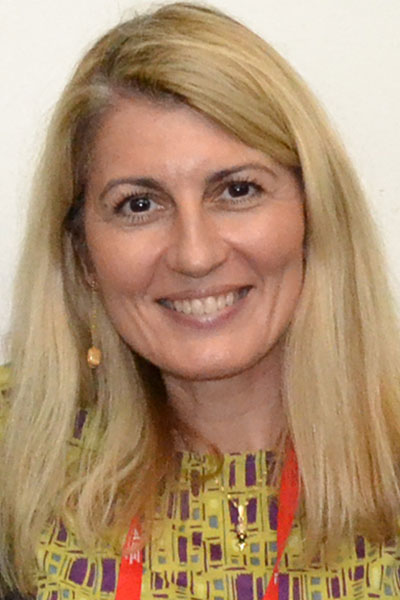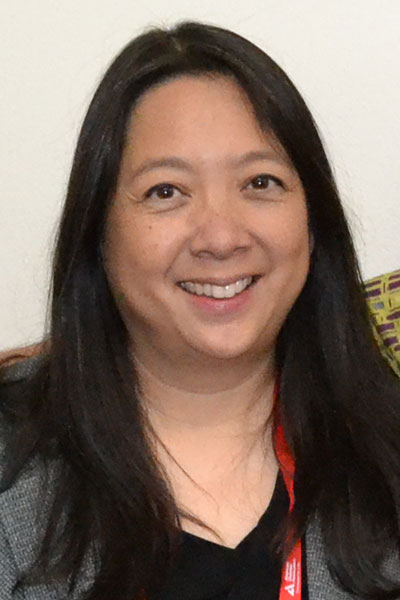Diabetes-related retinal disease (DRD) is the most common cause of blindness in working-age adults, with a prevalence of 77% in people with type 1 diabetes and 25% in people with type 2 diabetes. Additionally, 52% of those with youth-onset type 1 diabetes and 56% with youth-onset type 2 diabetes have DRD at follow-up 12.5 years after diagnosis.
A group of experts reviewed the significance of DRD and explored potential solutions for patients during the session Creating a World without Visual Loss from Diabetes.

“There is a great need for an unbiased assessment of the impact of diabetes not only on the retina, but the whole eye,” said Patrice E. Fort, MS, PhD, Associate Professor of Ophthalmology and Visual Sciences, University of Michigan.
Dr. Fort explained that most current therapies target interventions during the late stages of DRD, when vision is already dramatically compromised. He asserted that studies of early-stage DRD are needed to identify targetable pathways to preserve vision and prevent disease progression.
“The retina is one of those tissues that cannot be biopsied, so what we need is high-quality post-mortem tissues,” Dr. Fort explained.
Collecting a large sample size of post-mortem tissue would enable researchers to build sample sets of highly characterized human tissues for multi-level insights into the pathological mechanisms of DRD.
Researchers also need to establish the levels of correlation between the retina and blood as well as the retina and vitreous for the development of precision medicine therapies, Dr. Fort said. Investigators also hope to study and map the cell-specific alterations and implications across different stages of disease development.
The goal of leveraging this data is to create a biorepository resource center for clinical investigation and collaboration among researchers.

Stela Vujosevic, MD, PhD, Head of the Medical Retina Unit at the University Eye Clinic, San Giuseppe Hospital, University of Milan, Italy, reviewed the structural and functional connections in DRD.
She explained that patients with diabetes have abnormal retinal function, even with an apparent absence of clinical retinal disease.
“The function and structure of impairment do not always go in parallel,” Dr. Vujosevic said. “So, we can have very late stages of the disease from a morphological point of view but still preserved visual acuity.”
Retinal degeneration in diabetes is thought to occur before clinically visible retinal microvascular damage and histologically consists of neural apoptosis and glial cell activation, leading to ganglion cell death with the thinning of tissue in the inner retina.
“Neuronal, vascular, and photoreceptors damage, even at the early stage of the disease, can be detected and quantified,” Dr. Vujosevic said.
Non-invasive imaging modalities like spectral domain optical coherence tomography have the potential to track early retinal thinning and confirm previous visual function data, she said.

Jennifer Sun, MD, MPH, Associate Professor of Ophthalmology, Harvard Medical School, highlighted recent developments in the design of clinical studies based on an advanced understanding of DRD.
Dr. Sun was tasked with helping to lead a DRD staging system update to study disease pathophysiology, identify endpoints for clinical research, and predict future events of medical importance. The first phase has identified significant knowledge gaps.
“What we have is not so much a proposal for a new DRD staging system as much as a proposal for clinical studies that will hopefully move us further along in the effort to identify a new staging system,” Dr. Sun said.
The group’s next initiative is to identify and validate clinical biomarkers and endpoints for DRD. To do so, the group will analyze objectively measurable biomarkers to identify those correlated with clinical benefits, making them surrogate endpoints. The group is also studying clinical endpoints that reflect how patients feel and function.
“What’s really going to be important is how we then validate the surrogate endpoints or clinical endpoints for specific contexts of use in order to create new primary endpoints for registration trials,” Dr. Sun said.
This validation process will require multiple prospective studies with diverse cohorts. The group’s initial clinical studies are scheduled for 2024.
This session was organized in collaboration with the Mary Tyler Moore Vision Initiative. The iconic American actress devoted a large part of her life to raising awareness about the devastating effects of diabetes and the promise of research. Ms. Moore nearly went blind from DRD before her death in 2017.

